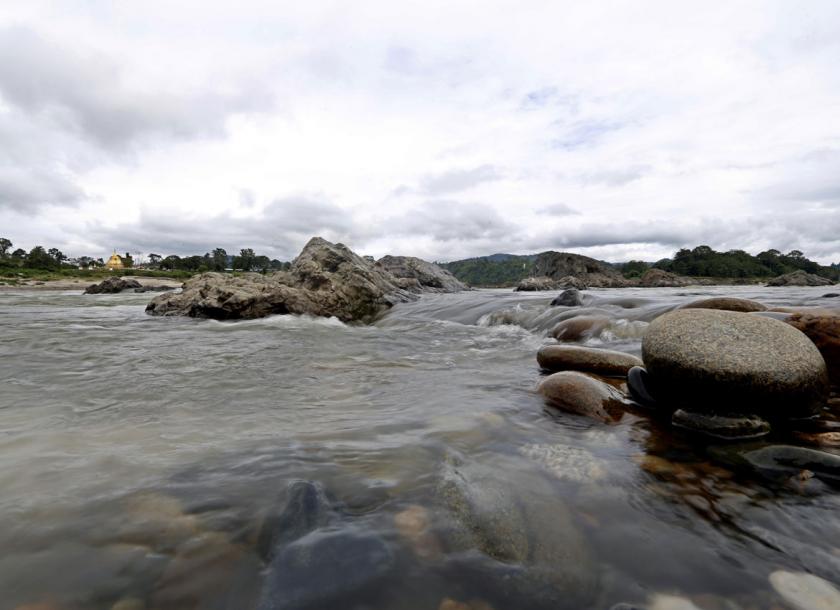International Finance Corporation (IFC) and Myanmar authorities released the draft Strategic Environmental Assessment (SEA) report to improve the sustainability of hydropower sector
24 พฤษภาคม 2561
The draft strategic environmental assessment (SEA) report which aims to improve the sustainability of the hydropower sector was released by the International Finance Corporation (IFC) and the government. The Ministry of Electricity and Energy (MOEE) and Ministry of Natural Resources and Environmental Conservation (MONREC) led the report which has been shared with stakeholders for public review and feedback.
“For the past 18 months, the SEA process has engaged stakeholders from civil society, NGOs, private sector, financial institutions and development,” the IFC, a member of the World Bank Group, said in a statement released on May 21.
One major recommendation outlined in the SEA is to preserve the mainstems of the country’s key rivers – including the Ayeyarwady, Thanlwin and Chindwin among others - encouraging decision makers to explore locations that have less environmental, social and cultural risk.
U Hla Maung Thein, director general of the Environmental Conservation Department under the MONREC, said that his department, having reviewed the SEA final report and recommendations, agrees with “the direction it is pointing hydropower development in”.
“Recommending to protect the mainstems [principal watercourse] of Myanmar’s key rivers would be a monumental achievement with multiple socio-economic benefits, keeping the natural ecosystems of our country. We hope to see this recommendation moved forward by decision makers,” he commented.
Myanmar’s SEA focuses on the country’s hydropower potential while mapping out environmental and social complexities. The SEA will identify opportunities to sustain natural river basin processes that regulate and maintain river health and other ecosystems services. A river basin designated as low- or medium-risk is not necessarily a green light for development. Instead, these areas may provide higher scope for development than other potential biodiversity hotspots, areas of cultural importance, or affected by conflict.
Daw Mi Mi Khaing, director general of the Department of Electric Power Planning under MOEE said that the SEA is “a first step in the right direction”.
“This is the first time we have a basin-wide perspective on environmental and social values, which will help decision makers better site hydropower projects,” she commented.
Upon review of all stakeholder comments, the SEA Final Report will then be published online in English and Myanmar languages.
Hydropower projects are not without controversy in Myanmar.
In January, civic groups in Shan State lambasted a plan by the government and the IFC to build a hydroelectric power project in the state.
“Any central government attempt to proceed unilaterally with dams in ethnic conflict areas, when control over natural resources is still being negotiated, is dangerous and provocative,” the Action for Shan State and Rivers (ASSR), an umbrella group of several non-government organisation, said in a statement back then. It also criticised the IFC for conducting in a meeting in Taunggyi on January 15 , which is part of a series of meetings to “finalise” a countrywide strategic environmental assessment for hydropower development. “From the outset, ASSR has been against this strategic environmental assessment, which is just a ploy to push ahead with the building of large dams….against the wishes of local communities,” the statement said. The IFC has been organising meetings to finalise a countrywide strategic environmental assessment for the hydropower project since 2016.
On December 23 last year, about 1000 residents and farmers from all over Shan State protested in Tangyan township against proposed hydropower projects on the Salween River, including the Naung Pha dam, which will export power to China.
In a statement released on February 3 this year, the IFC said it is not part of any major hydropower project in the country and instead is helping in capacity building. “Unlike environmental and social impact assessments that review individual projects, the SEA is analysing basin-wide trends and risks,” it said.
Since September 2015, the IFC, with support from the Australian government, has helped Nay Pyi Taw to manage risk by training officials on environmental and social standards in the hydropower sector.
(The Myanmar Times: https://www.mmtimes.com/news/ifcs-draft-hydropower-sea-report-released.html )











